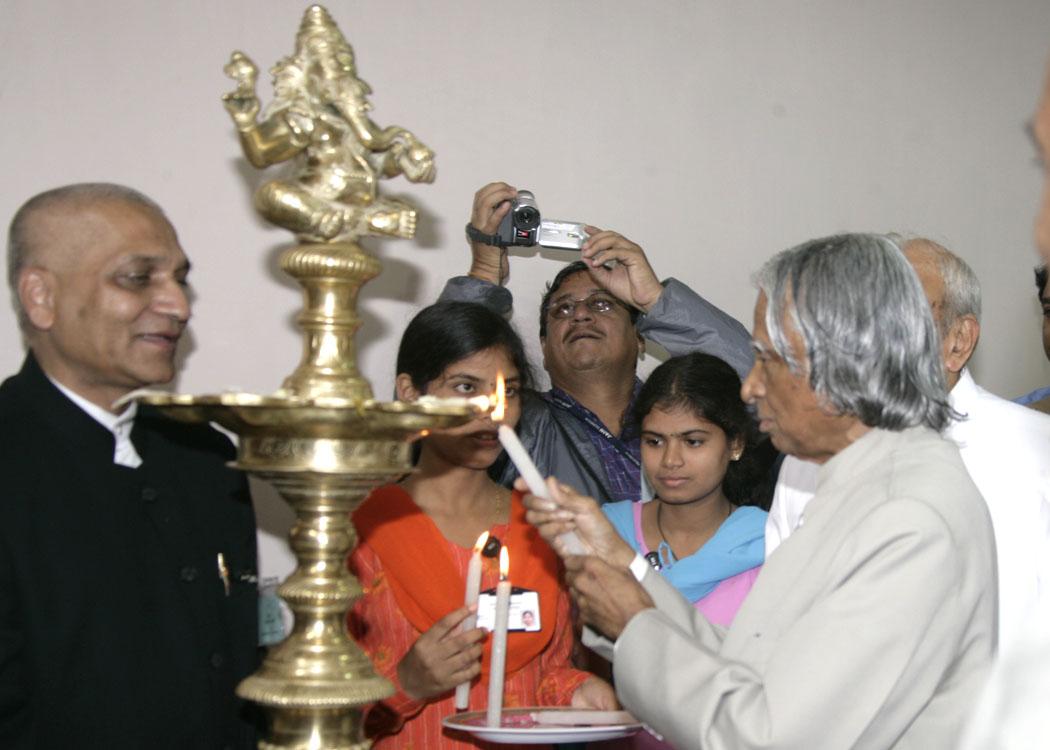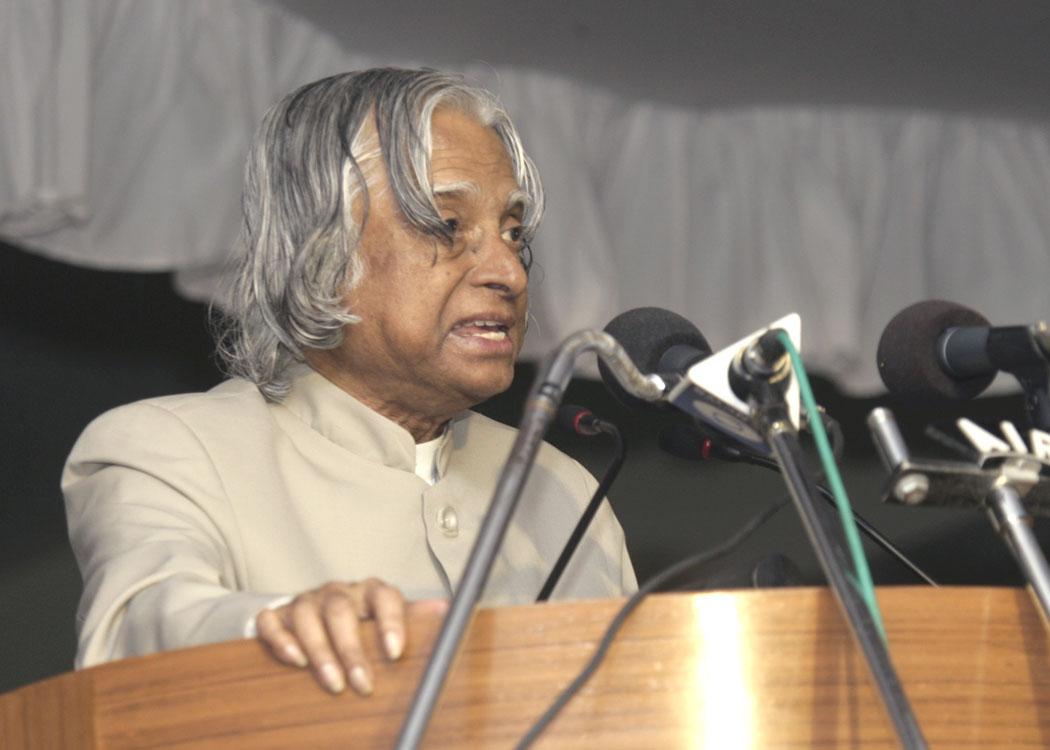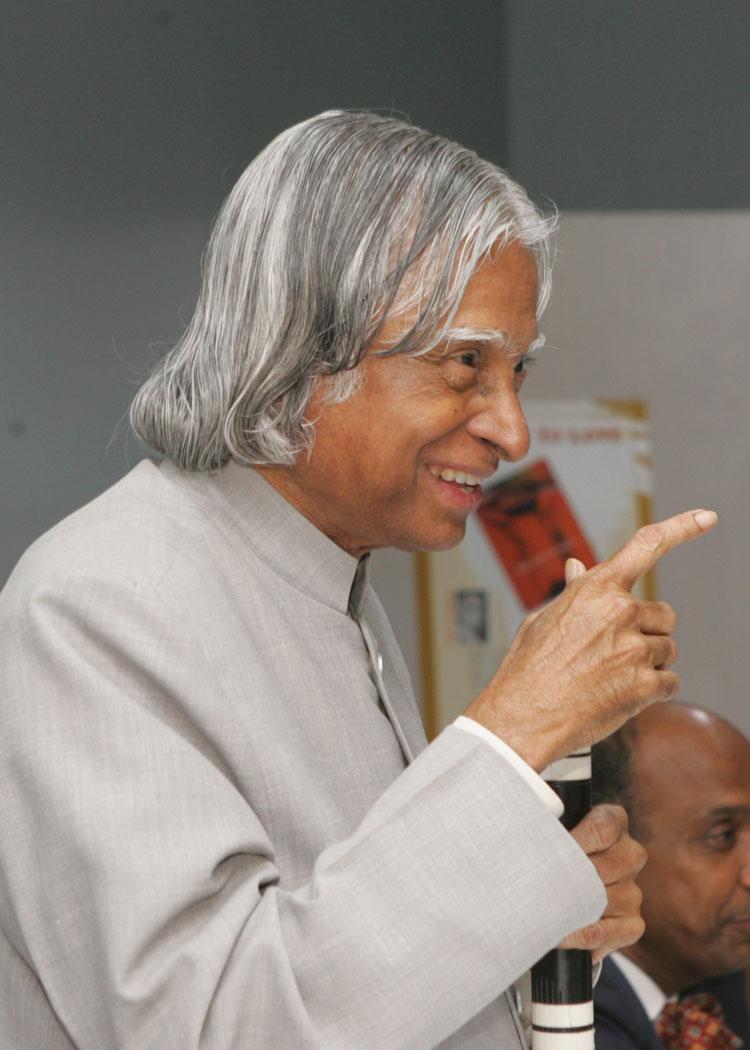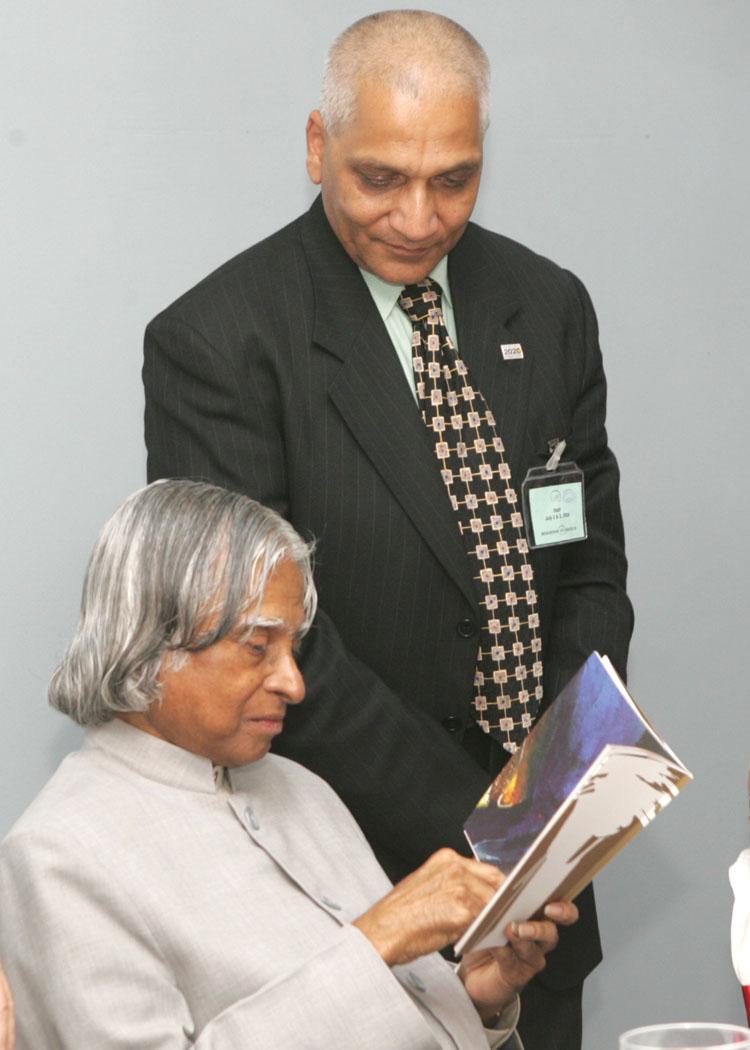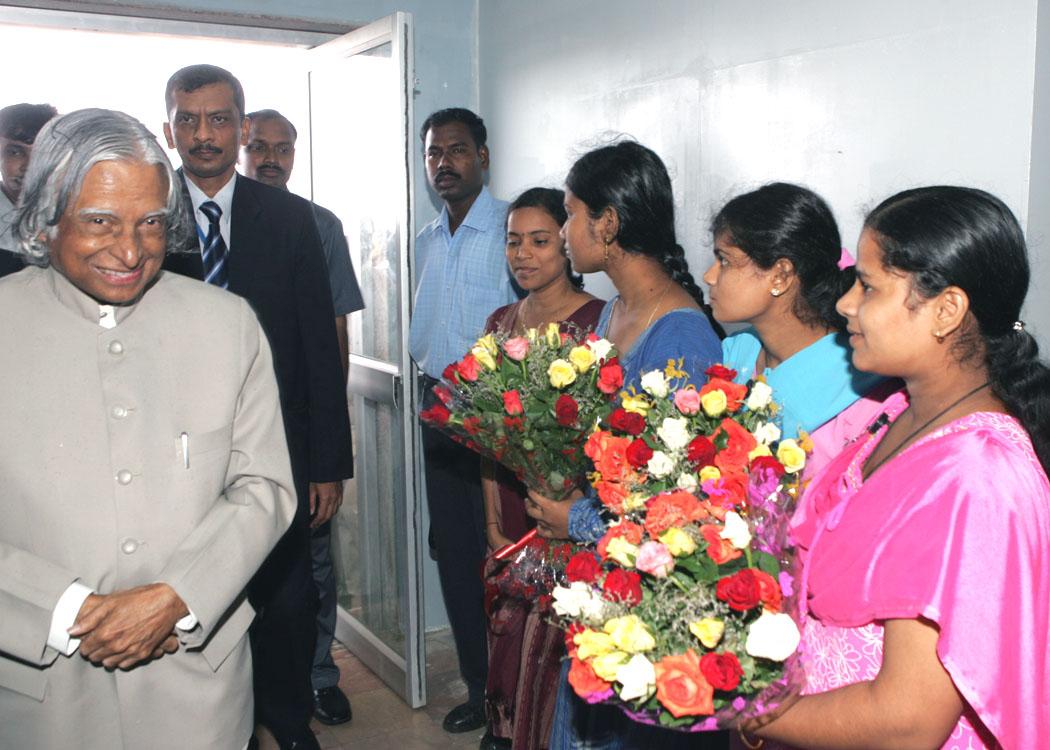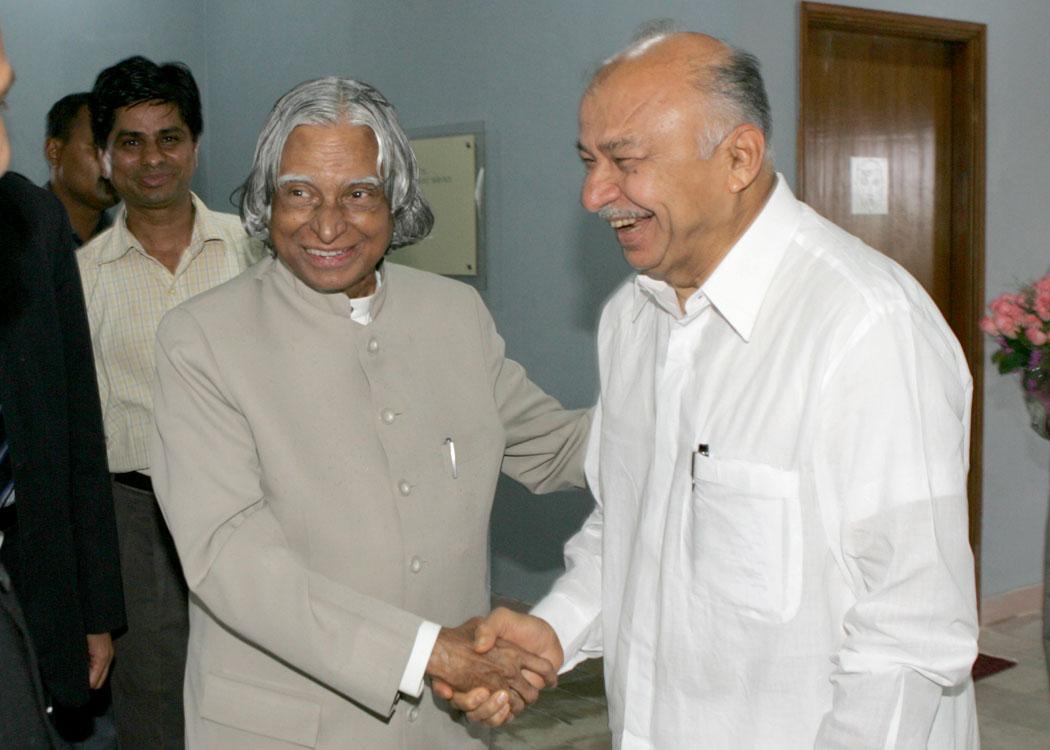Address at the Inauguration of Bhubaneswar Eye Institute, Bhubaneswar
Bhubaneswar : 03-07-2006
Light to See: A beautiful Mission
"Small aim is a crime"
I am delighted to participate in the inauguration of Bhubaneswar Eye Institute (BEI). Bhubaneswar Eye Institute is indeed the result of a vision. Vision of minds leads towards scaling of great heights. Height achieved is directly proportional to the quantum of faith in oneself. Dr Taraprasad Das is indeed full of faith and enthusiasm to realize a great mission. That is how, I saw a beautiful campus. I met doctors, paramedics and supporting staff last evening. I saw the campus which is not only beautiful but also has abundance of beautiful minds. Beautiful minds are creative and will result in giving light to needy many and many. Umbilical connectivity between L.V. Prasad Eye Institute, BEI and noble minds from various parts of the world has resulted in the beautiful complex what we are seeing today.
My greetings to Dr. Taraprasad Das, the members of BEI, the members of L.V. Prasad Eye Institute, ophthalmologists, optometrists, medical social workers, medical technologists and distinguished guests. I would like to talk to you on the topic "Light to See: A beautiful Mission".
I am very happy to know that Bhubaneswar Eye Institute has come up exactly within a year from the commencement of construction. Along with the building, care has also been taken to make the whole area green which is very essential for providing an angelic touch, comforting to the eyes. Simultaneously, action has also been taken to select and train the Ophthalmologist and the Paramedical personnel as a team for ensuring provision of well co-ordinated medical services to the patients. Having had experience in the mission mode projects in India, I find a similarity in the approach of BEI, in providing an end-to-end solution and a single window to the world of eyes. The BEI team has a great challenge of providing eye care support to Orissa state where nearly 2% of their population is visually challenged people as against the national average of 1.4%. Now, I would like to discuss the first challenge of treating a bright young boy who needs immediate ophthalmologic attention.
The Eye Care Need of the Young
Recently, I have seen a press report stating that a 12th class student , Master J. Sonal of Fakir Mohan Junior College at Balasore, Orissa has secured the 10th rank in the board examination despite having an eye disorder that prevents him from studying for more than two hours a day. Sonal's father while being happy to see the extraordinary performance of his son in spite of pigment problems in both his eyes is a worried person. Sonal suffers from irritation and his eyes start watering, if he studies continuously for more than twenty minutes. However, he concentrated on his studies when he sat down to read and was extremely attentive in his class. He could not study science because of the eye disorder. I am sure the doctors of Bhubaneswar Eye Institute will take this challenge and find a cure for the pigment problem experienced by Master Sonal. The financial support required for the treatment can be arranged. This treatment may definitely be helpful to many other patients having similar problems across the country.
National Mission for sight
Over the last 30 years, the technology for eye care has improved exponentially. Today precision laser surgery has become common place for cataract treatment and for spectacle free vision. The cost of technology, the availability and acceptability have made the national mission for "Vision 2020: The Right to Sight" a reality. The national mission should focus on protocol driven treatment involving mission-oriented doctors. This team should organize series of eye camps, reinforcing many eye hospitals with technology to cover larger population for the treatment. In doing so, integration of minds is possible and governmental support can be made easier. There is a universal enthusiasm to find permanent solutions to the vision disorders. Bhubaneswar Eye Institute can definitely become an important contributor for the right to sight initiative of the country.
The Sun temple of Konark has long been a major attraction for tourists to Orissa. With its beautiful coastal line and white sand beaches the Sun God has stood as a symbol of excellent eye sight. Orissa and eye care have thus been entwined by nature. With the functioning of institutions like BEI, I feel that an additional attraction to Orissa from world over would be the eye care tourism.
Tele-Ophthalmology
Bhubaneswar Eye Institute can create a tele-Ophthalmology network using tele-eye care network of ISRO. Once we have the connectivity, then there should be a universal tele-ophthalmology system in place, Ophthalmologic specialist from different regions can come together in virtual clinics. More importantly, this network can be used for creating awareness and education for eye care and immediate aid in case of accidents. A multi eye clinic environment with seamless two-way interaction between the doctors and patients will enable the eye specialist to diagnose the particular patient and also seek expert opinion from distance doctors located in remote areas. Such sharing of knowledge will provide cost effective integrated treatment for the patients in the specialized areas like corneal blindness, surgical complications, posterior segment disorder, retinitis etc. The same system can be transformed into a virtual ophthalmic institute from where a specialist lecture or a diagnostic and treatment breakthrough, can not only reach any remote corner, but also enable a good eye specialist in the remote area, to share multicast information with others in the network. Thirdly the same system can be used to offer practical training to eye doctor and para-medical staff on the intricacies of eye operation through a "Virtual Operation Theater". Such is the power of network in Tele-Ophthalmology.
Need for indigenous medical devices & systems
You are aware that approximately twenty two percent of our population is still below the poverty line and medical care has to be provided to a large population. I was discussing this problem with some of my doctor friends and those connected with health care. I realized that the major problem in Indian health care delivery system including the area of ophthalmology is the near total dependency on medical imports of diagnostic and therapeutic equipment and devices including consumables. While the common man seldom buys anything imported, he is made to purchase or pay partly for the cost of the imported gadgets for healthcare. This clearly brings out that, we need to create an infrastructure capable of producing our own medical equipment, devices and consumables, based on the technology available and to be developed within the country, at affordable cost. Certain initiatives were taken in this direction but a commercially competitive effort leading to production and service network is yet to emerge.
A consortium of ophthalmology institutions like Bhubaneswar Eye Institute has to promote research and development of state-of-the-art ophthalmology equipments in collaboration with medical research institutions, medical universities and industry.
Tele-eyecare and Ophthalmology
Bhubaneswar Eye Institute must network with Arvind Eye Hospital, Madurai, Sankara Nethralaya, Chennai, JPM Rotary Eye Hospital, Cuttack, Sri Satguru Seva Trust, Chitrakoot, Rajendra Prasad Eye Institute, New Delhi apart from LV Prasad Eye Institute, Hyderabad who are rendering excellent eye care service in different regions. It will be useful to network all these hospitals through a tele-education network and share the experience of specialists in various fields of ophthalmology. They can have periodic tele-meetings in which the special and unique experiences and the special strategies adopted by the doctors can be discussed. This will enable knowledge sharing and feasible solutions to certain special class of diseases, which are being seen for the first time in a particular region. Also, the network can be used to conduct research on special areas including stem cell research. There is a need of multiple institutions sharing high cost research facilities.
The largest patient base and diversity are available only in a few countries like India. While our experiences could benefit the rest of the world, the experiences of the rest of the world may not be directly transportable to the Indian environment. The networking of the institutions can provide an integrated knowledge base which when it grows to significant size can be used for detecting the relationship between eye disorders and human genome, hereditary, ethnicity and geography.
Research Area
Many of you might be familiar with the famous science fiction "PREY" by Michael Crichton who talks about a new kind of medical imaging. Cameras, a swarm of camera parts, all working together can be injected into the human body, each camera bit being of nano scale. The swarm of camera parts consisting of nano sensors can work in a coordinated way to produce a man made eye. With the advances in nano technology today and the promise of the convergence at least functionally of biological processes with silicon technology, the day of the science fiction becoming a reality is not very far off provided it is backed up by a well coordinated research and development programme.
Nano-technology is finding large-scale application in drug delivery system and biomedical application. The low dimensionality of many nano-structures, in which electrons are free to move in only two, one or near zero dimensions, has a profound effect on their chemical, electronic and optical properties.
Focal stimulation requires electrodes or groups of electrodes in the order of 100 nano meters or less with spacing of no more than 5 micron. Localized structures of this sort would stimulate the actions of rods and cones in the retina of the eye. This type of structure is fundamental to the possibility of developing an effective prosthesis device to restore vision in certain eye diseases. Bhubaneswar Eye Institute can establish a Nano Technology Research Foundation in collaboration with other major eye care centers in the country.
Investment in eye care
The pyramid model of eye-care delivery as focused by Dr. G N Rao is an important roadmap. It involves creation of a four tier system of treatment namely primary, secondary, tertiary and advanced tertiary care. In India, we have 20% vision centres for primary care, 70% service centres for secondary care, 50% training centres for tertiary care and 25% centres of excellence. We need to double the investment to provide full compliment of eye care facility for all the four sectors with participating eye centres, government agencies and international partners. I had suggested preparation of an integrated proposal based on the Eye Pyramid model by the International Association for Prevention of Blindness India Chapter in partnership with LV Prasad Eye Institute, Hyderabad. I would suggest Bhubaneswar Eye Institute can take the lead and submit the proposal for the consideration of the Ministry of Health, private sector industries, eye-care interested organizations and philanthropists for necessary funding.
Ophthalmologic communication
Recently, there was a meeting of cured patients, their doctors and a few social workers. One important point emerged during the interaction was that the relationship between the patient and doctor extends to patients' family. This in turn, transmits effective messages from one family to another family on advice to prevent the eye diseases, necessity of periodic checks, the dietary habits and the need for life style changes including eye exercise for good eye health. Actually, I believe this good contact between the doctor and patients is comparable to that of a teacher and student. I request every doctor of Bhubaneswar Eye Institute to play the role of a teacher in advising every family on eye disease prevention and methods to lead a healthy life. I am sure all of you assembled here will find time for this noble action.
Missions for Bhubaneswar Eye Institute
I would suggest that the following missions to be undertaken by BEI immediately which will facilitate provision of quality eye care to the people of Orissa.
a. Carrying out population studies and population genetics studies in the State of Orissa on different categories of blindness.
b. Studying the causes of sickle cell anemia and its impact on eyes prevalent among the tribal population leading to the generation of a counseling and treatment regime.
c. Connecting all the eye care centres in Orissa which will enable sharing of valuable treatment information between centres and also provide training to the doctors and para-medical personnel.
d. Bringing out a Braille board in Oriya for helping people with acute blindness.
e. Organizing a Conference of all the eye care professionals located in different centers in Orissa during 2007 for discussing the special eye care problems pertaining to the State of Orissa and working out a solution for the challenges.
f. Computerization of all the transactions taking place in the hospitals for enabling easy retrieval of valuable clinical data for research purposes.
Conclusion
"Defect free vision for all" should be our national mission. The eye problems of the children can be corrected, if diagnosed early. Such programmes should aim at screening all the children. Doctors of Bhubaneswar Eye Institute can conduct eye camps in rural areas around Bhubaneswar so that the rural children can be screened at the earliest stage for detection of eye defect if any. Any one having defective vision or any obvious complaints should be brought to the eye institute for investigation and treatment. I have been asking the students to be helpful to their colleagues by bringing out special eye problem of the child to the notice of the parents or the teachers. This type of intervention will enable early detection and promote the concept of "Vision for All" in its true perspective.
We have the best of doctors and technologists in India. We have core competence in design and software engineering. Emerging technologies in virtual reality and micro machines will transform the healthcare scenario. This transformation should lead to helping the people who cannot afford the modern medical care. We also have amongst us today, the best doctors in eye care from world over. I suggest that all of you join together and say, "Let there be light" and I am sure the world will become a much more lighted place and brighter.
To improve the availability of eye care facility to the rural people around Bhubaneswar, I recommend deployment of a mobile clinic by Bhubaneswar Eye Institute. This will be an important contribution by this institute for preventing the occurrence of blindness in this region. One of the great qualities of human being as envisioned by Almighty is to give and give. What any one of us can give who is blessed with eye vision. When I see you all, professionals of Bhubaneswar Eye Institute, Ophthalmologists and medical technologists, I find God has blessed you all with the ability and mind to give the vision for thousands and thousands of our fellow citizens. In this direction anything is needed I can certainly assist. With these words, I inaugurate the Bhubaneswar Eye Institute. My best wishes to all the members of Bhubaneswar Eye Institute success in their mission of providing quality healthcare to all the citizens in this region.
May God Bless you.

